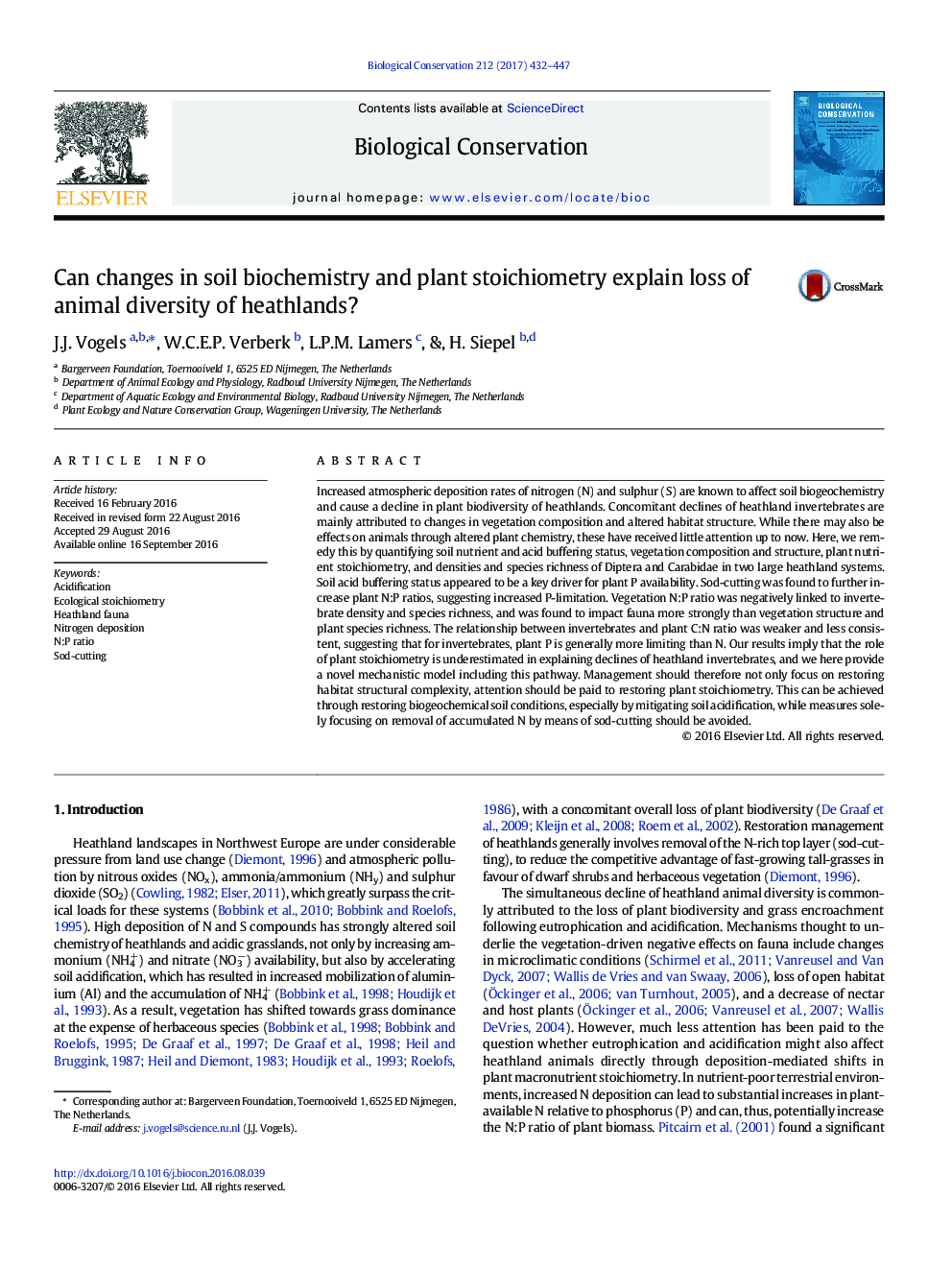| Article ID | Journal | Published Year | Pages | File Type |
|---|---|---|---|---|
| 5743069 | Biological Conservation | 2017 | 16 Pages |
Increased atmospheric deposition rates of nitrogen (N) and sulphur (S) are known to affect soil biogeochemistry and cause a decline in plant biodiversity of heathlands. Concomitant declines of heathland invertebrates are mainly attributed to changes in vegetation composition and altered habitat structure. While there may also be effects on animals through altered plant chemistry, these have received little attention up to now. Here, we remedy this by quantifying soil nutrient and acid buffering status, vegetation composition and structure, plant nutrient stoichiometry, and densities and species richness of Diptera and Carabidae in two large heathland systems. Soil acid buffering status appeared to be a key driver for plant P availability. Sod-cutting was found to further increase plant N:P ratios, suggesting increased P-limitation. Vegetation N:P ratio was negatively linked to invertebrate density and species richness, and was found to impact fauna more strongly than vegetation structure and plant species richness. The relationship between invertebrates and plant C:N ratio was weaker and less consistent, suggesting that for invertebrates, plant P is generally more limiting than N. Our results imply that the role of plant stoichiometry is underestimated in explaining declines of heathland invertebrates, and we here provide a novel mechanistic model including this pathway. Management should therefore not only focus on restoring habitat structural complexity, attention should be paid to restoring plant stoichiometry. This can be achieved through restoring biogeochemical soil conditions, especially by mitigating soil acidification, while measures solely focusing on removal of accumulated N by means of sod-cutting should be avoided.
